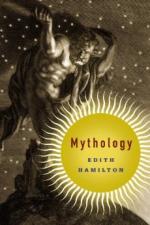|
This section contains 11,308 words (approx. 38 pages at 300 words per page) |

|
SOURCE: "Epic India," in Comparative Mythology, The Johns Hopkins University Press, 1987, pp. 68-93.
In the essay that follows, Puhvel discusses the ancient epics of India—the Ramayana and the Mahabharata—considering in particular the intermingling of myth and history in these complex narratives.
The five-century time span of roughly 800 to 300 B.C.E. effects the transition from Vedic to classical culture. Its early stages fit such tags as "later Vedic" or "post-Vedic," and the latter centuries qualify as "pre-classical" or "early classical." It is punctuated by a series of crucial cultural events. About the sixth century B.C.E. India becomes literate. By 500 Gautama Siddhartha preaches in Magadha and has launched Buddhism, in considerable measure beholden to post-Vedic Samkhya and Yoga philosophies and thus presupposing the earlier rise of the latter. About 400 the activity of grammarians (notably Panini) starts the codification of Sanskrit, which in the course of...
|
This section contains 11,308 words (approx. 38 pages at 300 words per page) |

|


